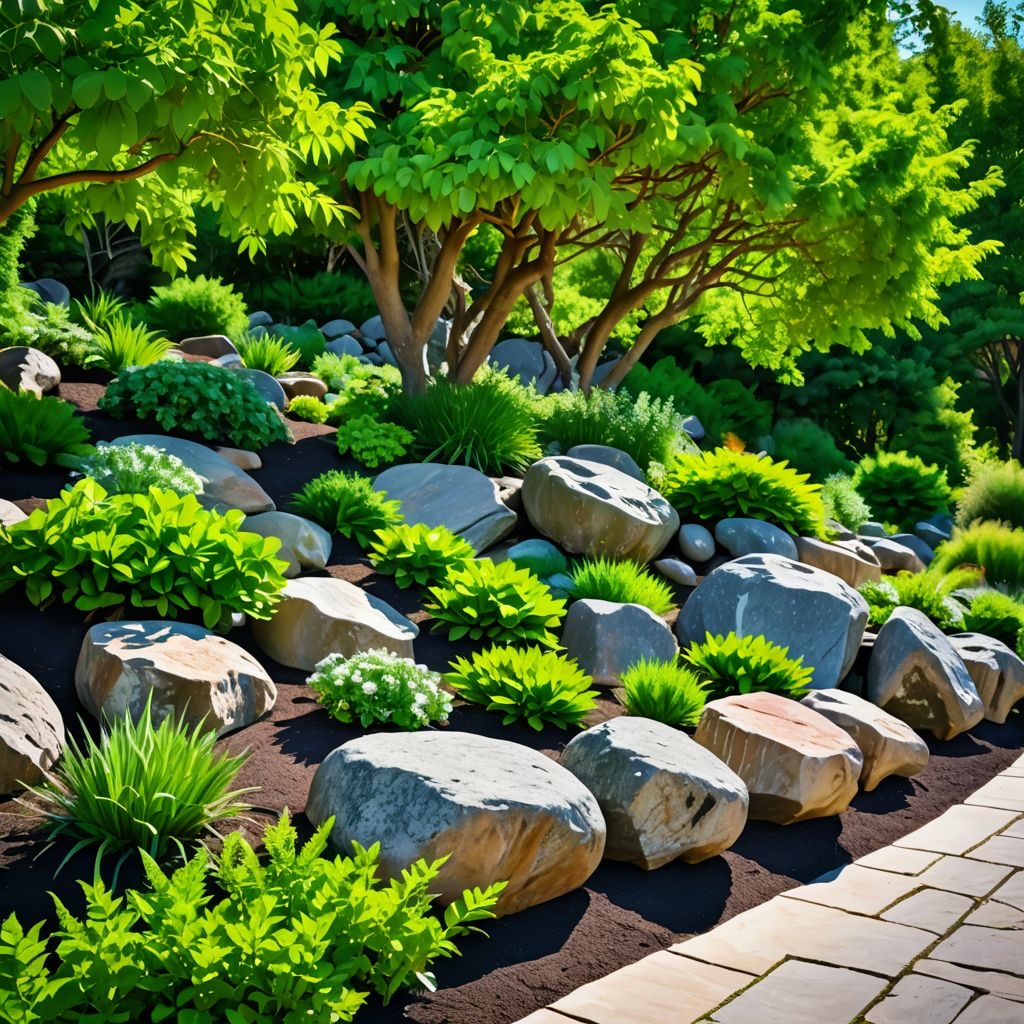
Table of Contents:
1. Introduction
2. Understanding Wildfire Risks
- 2.1 Statistics on Wildfires
- 2.2 How Wildfires Spread
3. Creating a Defensible Landscape
- 3.1 Zone 1: Immediate Vicinity of the Home
- 3.2 Zone 2: Intermediate Distance
- 3.3 Zone 3: Natural Landscape
4. Landscaping Design for Fire Prevention
- 4.1 Choosing Fire-Resistant Elements in your landscape
- 4.2 Ideal Plants for Landscaping in Winnipeg
- 4.3 The Role of Hardscaping
5. Maintaining Your Yard
- 5.1 Regular Yard Maintenance
- 5.2 Importance of Firebreaks
6. Tree and Shrub Care
- 6.1 Trimming and Pruning Techniques
- 6.2 The Importance of Height Management
7. Additional Protective Measures
- 7.1 Installing Irrigation Systems
- 7.2 Importance of Fire-Safe Patios and Decks
8. Community Involvement
- 8.1 Working with Local Landscaping Companies
- 8.2 Engaging in Wildfire Prevention Programs
9. Conclusion
Introduction:
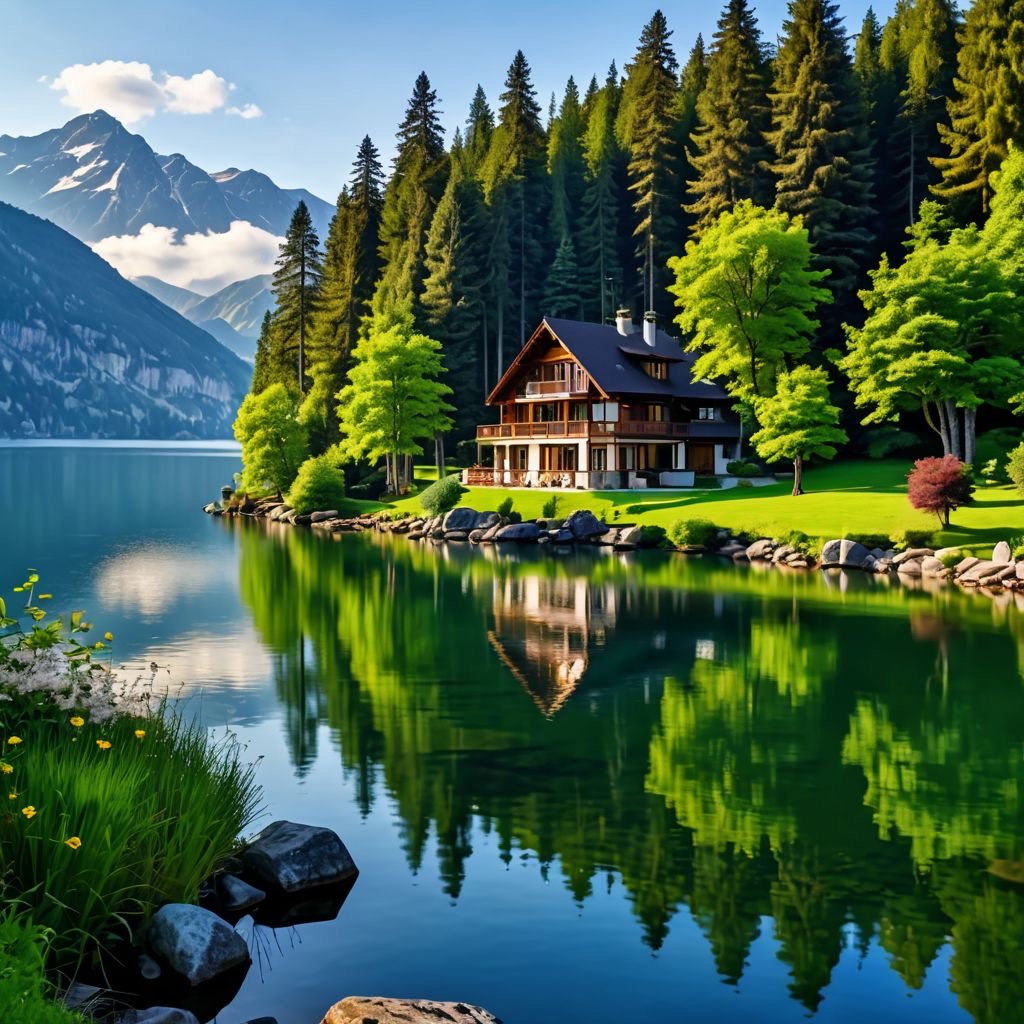
As Winnipeg home and cottage owners, we sip our morning coffee and bask in the beauty of our yards and lakes, where the vibrant palette of flowers, the lush greenery of shrubs, and the impeccable design of patios come together to create an enchanting outdoor haven. But beneath this picture-perfect facade lies a sobering reality. Wildfires are on the rise across Canada, becoming an alarming threat not only to our natural landscapes but also to our homes. Now, before you dismiss this as a 'not-in-my-backyard' problem, let’s pause for a moment and examine this more closely.
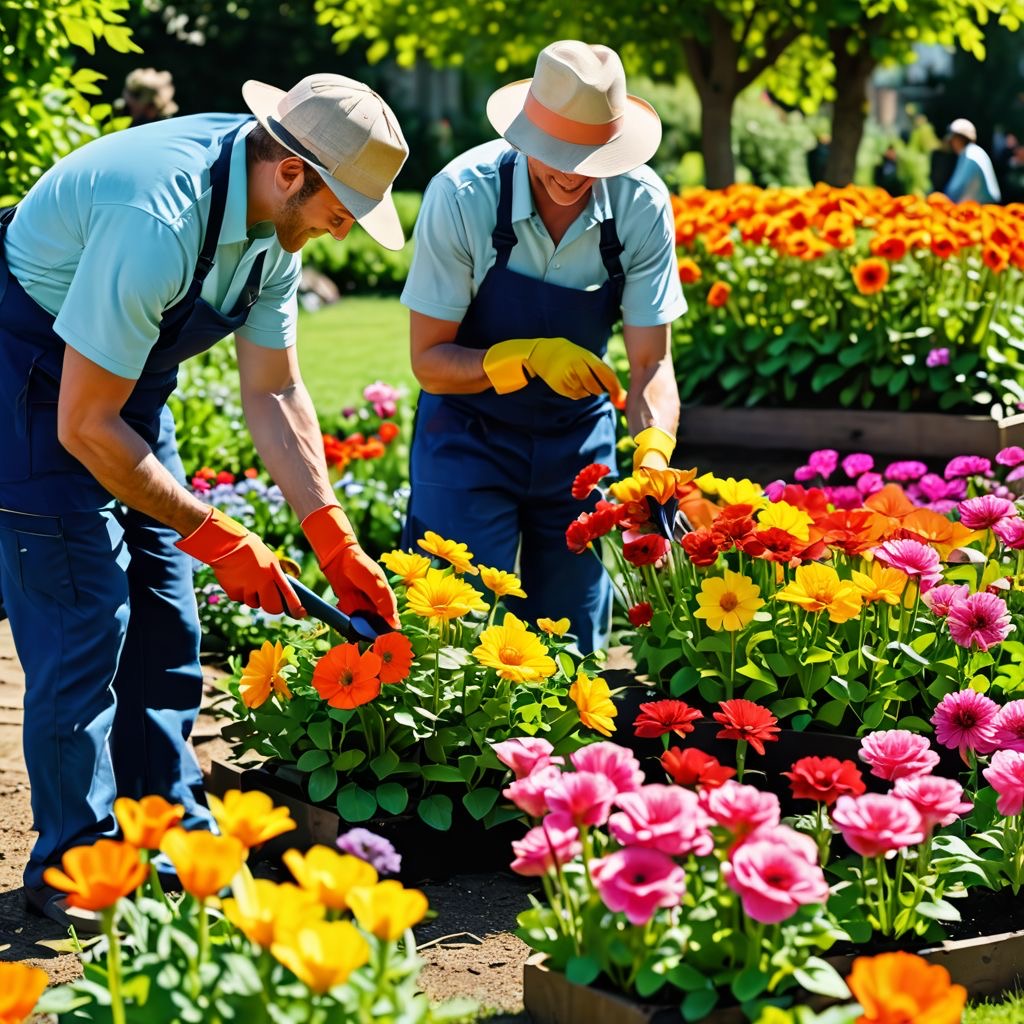
Did you know that in 2021 alone, nearly 9,270 wildfires burned approximately 7.1 million hectares of land in Canada? Holy Smokes!! With us experiencing longer fire seasons and faster-growing plant life, it's crucial for home and cottage owners to take fire safety seriously. But don’t fret—by implementing some proactive and practical measures, you can help to keep your property safe from wildfires while still enjoying the beauty of your backyard landscape design.
In this blog post, we will explore various strategies and actionable steps to help you protect your property against wildfires—from pruning trees and shrubs to selecting the right plants for your landscape. We’ll also look at how to integrate quality landscaping practices and landscaping maintenance in Winnipeg-Style, because a well-maintained yard isn’t just pleasing to the eye—it can also serve as your first line of defense. So, grab your gardening gloves, let’s dig in (pun intended)!
Understanding Wildfire Risks:
#2.1 Statistics on Wildfires
Before we get into the nitty-gritty of wildfire prevention, it’s important to understand just how serious this issue can be. In Manitoba, wildfires typically peak during the hot summer months, with June to August seeing the highest incidence. According to a report from the Manitoba Wildfire Service, an average of 1,100 wildfires are recorded annually in the province, and about 70% of these are caused by human activities. Understanding these statistics can give you a sense of urgency to take action.
2.2 How Wildfires Spread
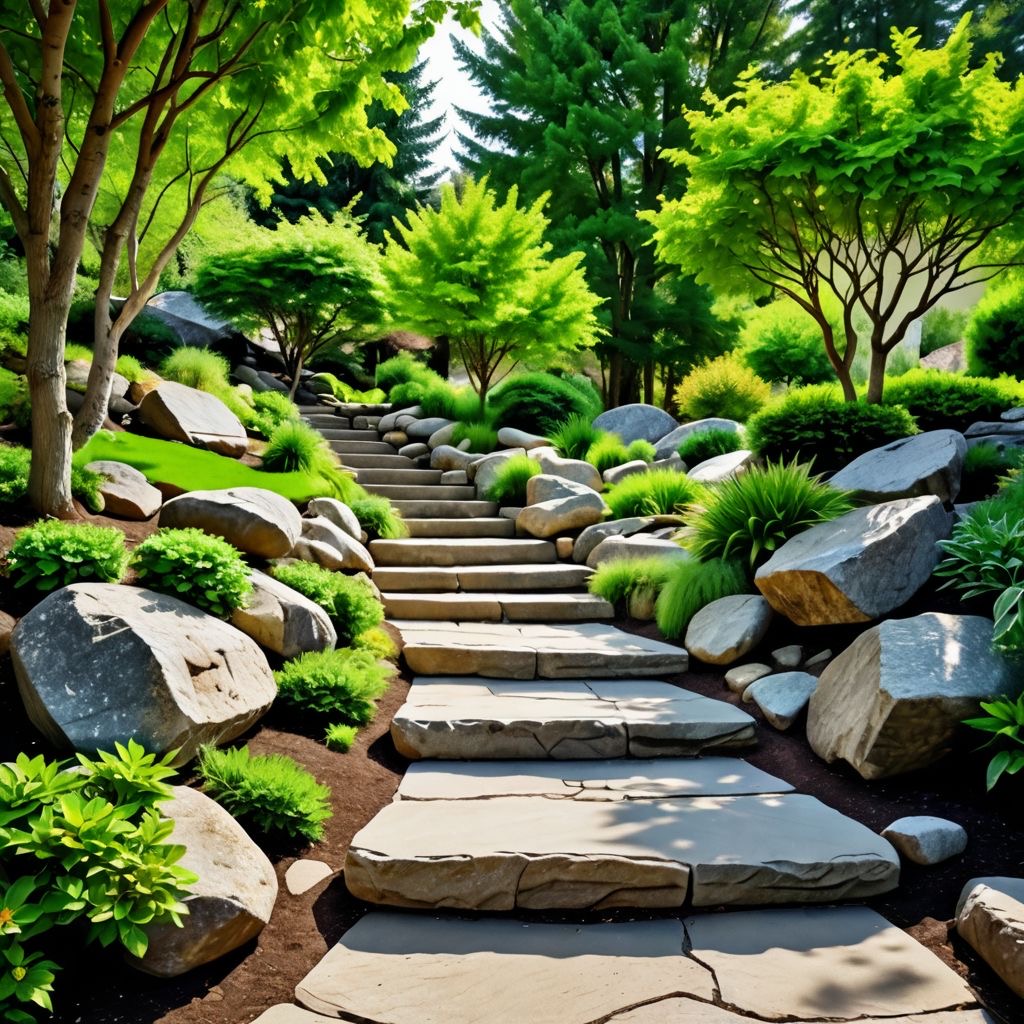
Wildfires don’t just magically appear out of thin air; they flourish under specific conditions. Understanding how they spread can guide your landscaping efforts. Wildfires can be fueled by dry vegetation, strong winds, and hot temperatures. The Fire Triangle, which includes heat, fuel, and oxygen, describes how fires can ignite and spread rapidly across landscapes. In Winnipeg, your yard could potentially serve as a fuel source if not properly maintained.
Creating a Defensible Space:
Creating a defensible space around your property is the cornerstone of wildfire risk management. This space acts as a buffer between your home and the potential threat of fire, and it is often broken down into three distinct zones.
3.1 Zone 1: Immediate Vicinity of the Home
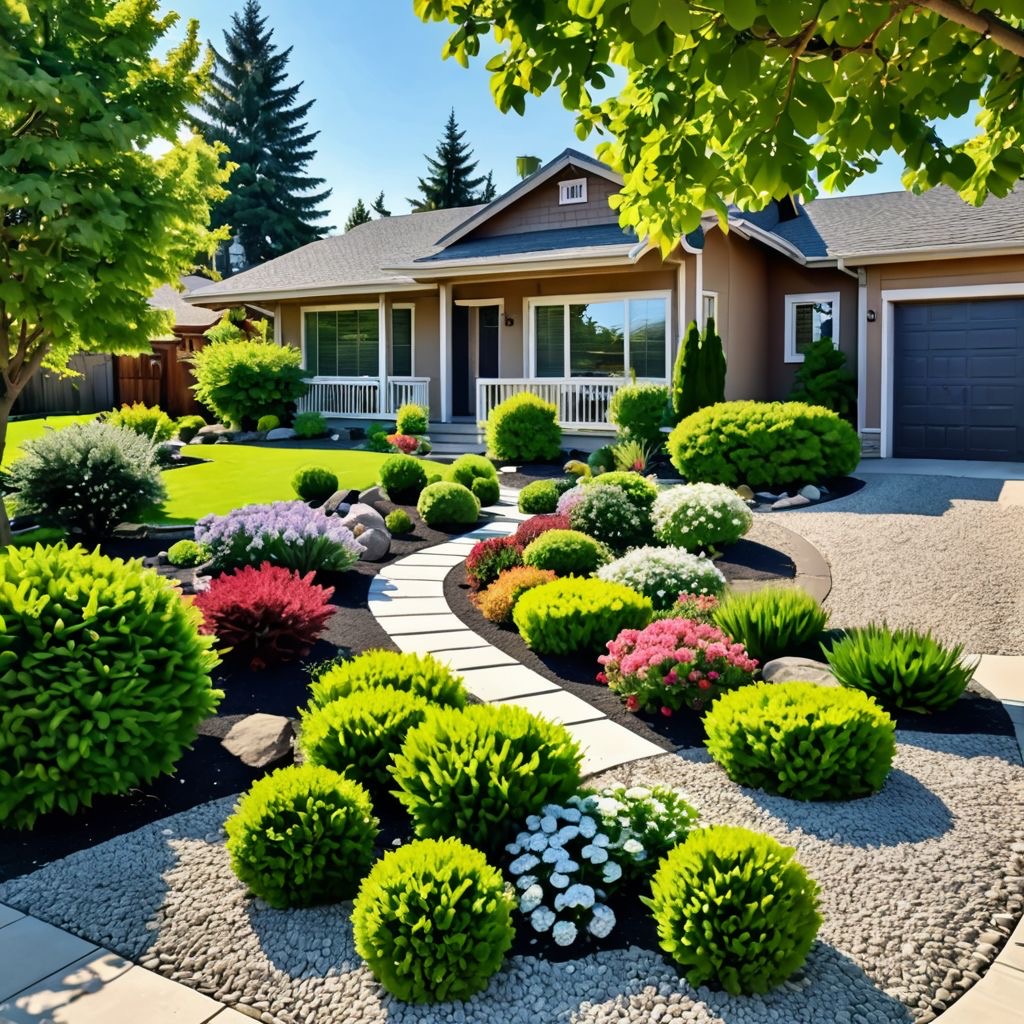
Zone 1 extends up to 5 feet from your home and is crucial for fire safety. Here, you want to keep a clear area by eliminating any dry grass, leaves, and other flammable debris. If you have plants, choose non-combustible materials like stones or gravel for landscaping that is closer to your home. Patio designs can incorporate heat-resistant features like stone benches or fire pits, but keep these at a safe distance.
3.2 Zone 2: Intermediate Distance
Zone 2 stretches from 5 to 30 feet from the home, where you can start implementing landscaping strategies to reduce fire risk. Think about incorporating hardscaping features like pathways and retaining walls to break up potential fuel sources. When pondering landscaping ideas for this zone, opt for plants that are well-irrigated and spaced to prevent the spread of fires.
3.3 Zone 3: Natural Landscape
Beyond the immediate area surrounding your home lies Zone 3, where the natural vegetation prevails. This zone should be managed through thinning trees and shrubs, particularly in areas that are prone to dry weather conditions. Collaborating with landscaping companies in Winnipeg can yield valuable insights into creating fire-resistant landscapes while preserving the beauty of nature.
Landscaping Strategies for Fire Prevention:
4.1 Choosing Fire-Resistant Plants
Fire-resistant plants are those that have characteristics that make them less susceptible to catching fire, contributing to the overall fire safety of landscapes, particularly in areas prone to wildfires. These plants typically have features such as high moisture content, thick and textured leaves, and certain chemical compositions that can help reduce flammability.
Characteristics of Fire-Resistant Plants:
1. High Moisture Content: Plants with a lot of water in their leaves are less likely to ignite.
2. Thick or Waxy Leaves: These can help retain moisture and resist burning.
3. Low Resins or Oils: Some plants produce oils or resins that can be highly flammable; fire-resistant plants typically have less of these compounds.
4. Non-Clustered Growth: Spacing between plants can reduce the spread of fire.
5. Fire-Resistant Bark: Some trees have thicker bark that can resist burning.
Examples of Fire-Resistant Plants:
1. Low-Cascade Mountain Fir (Abies lasiocarpa): This tree has a thick bark and is resistant to fire due to its high moisture content.
2. Manzanita (Arctostaphylos spp.): This shrub has a thick, waxy surface and a high moisture content.
3. Lavender (Lavandula spp.): While not completely fireproof, it has low flammability and can be a good choice in fire-resistant landscaping.
4. Sage (Salvia spp.): Various species, especially those native to dry areas, have higher moisture contents.
5. Rudbeckia (Black-eyed Susan): This perennial flower is attractive in gardens and exhibits better resistance to fire.
6. Globe Mallow (Sphaeralcea spp.): This drought-tolerant plant has a decent resistance to fire due to its lower flammability.
7. Yarrow (Achillea millefolium): Known for its resilience and lower flammability, making it suitable for fire-prone areas.
8. Native Grasse*: Many native grass species, such as blue grama (Bouteloua gracilis), are more fire-resistant than non-native grasses.
Fire-Resistant Landscaping Tips:
- Diverse Planting: Mix fire-resistant plants with others to create a balanced ecosystem.
- Spacing: Keep plants spaced apart to reduce the likelihood of fire spreading.
- Maintenance: Regularly prune and clear dead vegetation to minimize fire fuel.
When considering fire-resistant plants for landscaping, it's essential to select species that are well adapted to your local climate and soil conditions. This approach not only enhances fire safety but also promotes biodiversity and sustainability in the landscape.
When it comes to choosing the right plants for your yard, consider selecting those that are more resistant to fire. Native plants are often better adapted to your local environment and require less maintenance, thus reducing soil dryness, which in turn decreases fire risk. Minimize the use of highly flammable plants such as junipers or ornamental grasses. Instead, consider using groups of non-flammable shrubs spaced apart to create natural firebreaks.
4.2 Ideal Plants for Landscaping in Winnipeg
Now, let’s delve into some additional specific plants that do well in the Winnipeg climate and are relatively fire-resistant. Plants like the Manitoba Maple, Northern Red Oak, and Black-eyed Susan thrive in our zone while also dampening potential fire hazards. A well-curated flower bed design can enhance both your home’s aesthetics and fire safety.
4.3 The Role of Hardscaping
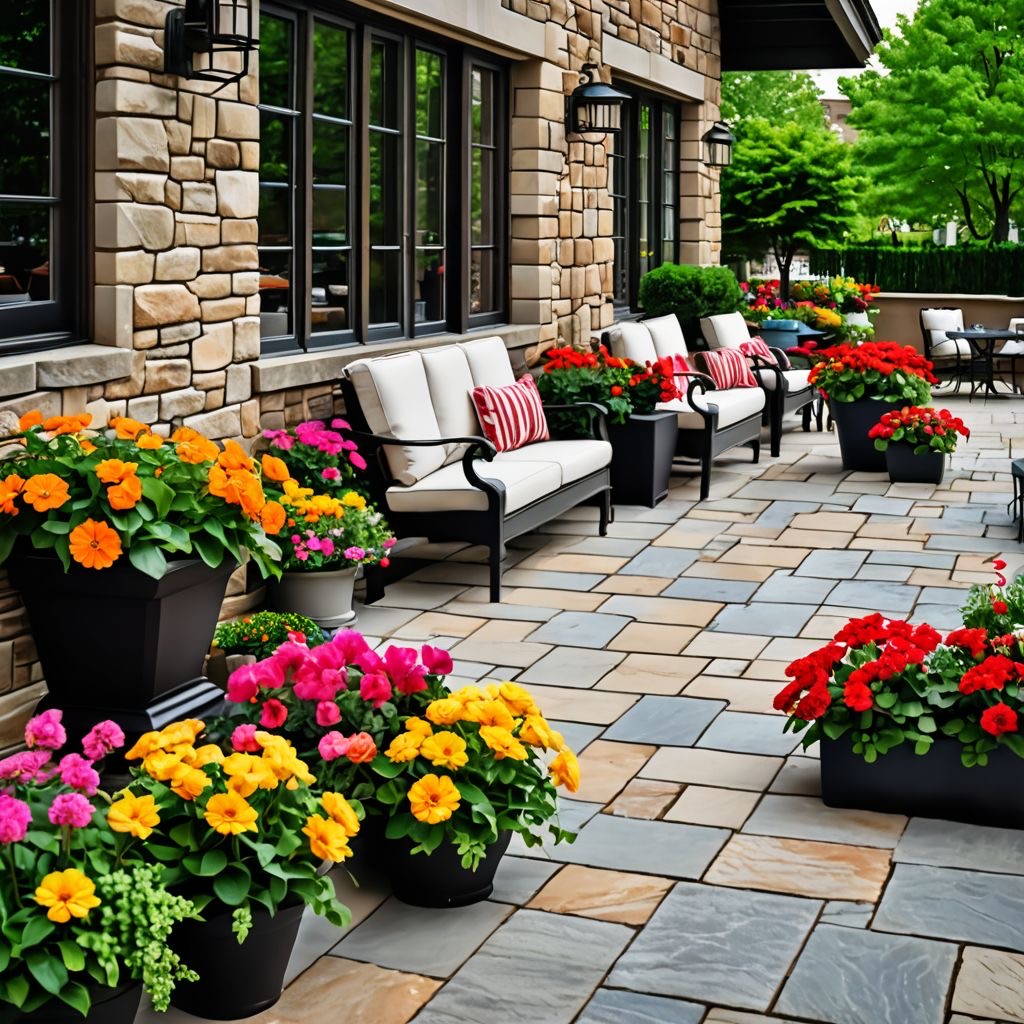
Hardscaping involves incorporating non-plant elements into your landscape design. Materials such as tile, stone, and gravel can create fire-resistant zones in your yard. For example, a patio design made from stone can serve multiple purposes, like providing a gathering spot for family and friends while also acting as a barrier against fire.
Maintaining Your Yard:
5.1 Regular Yard Maintenance in Winnipeg
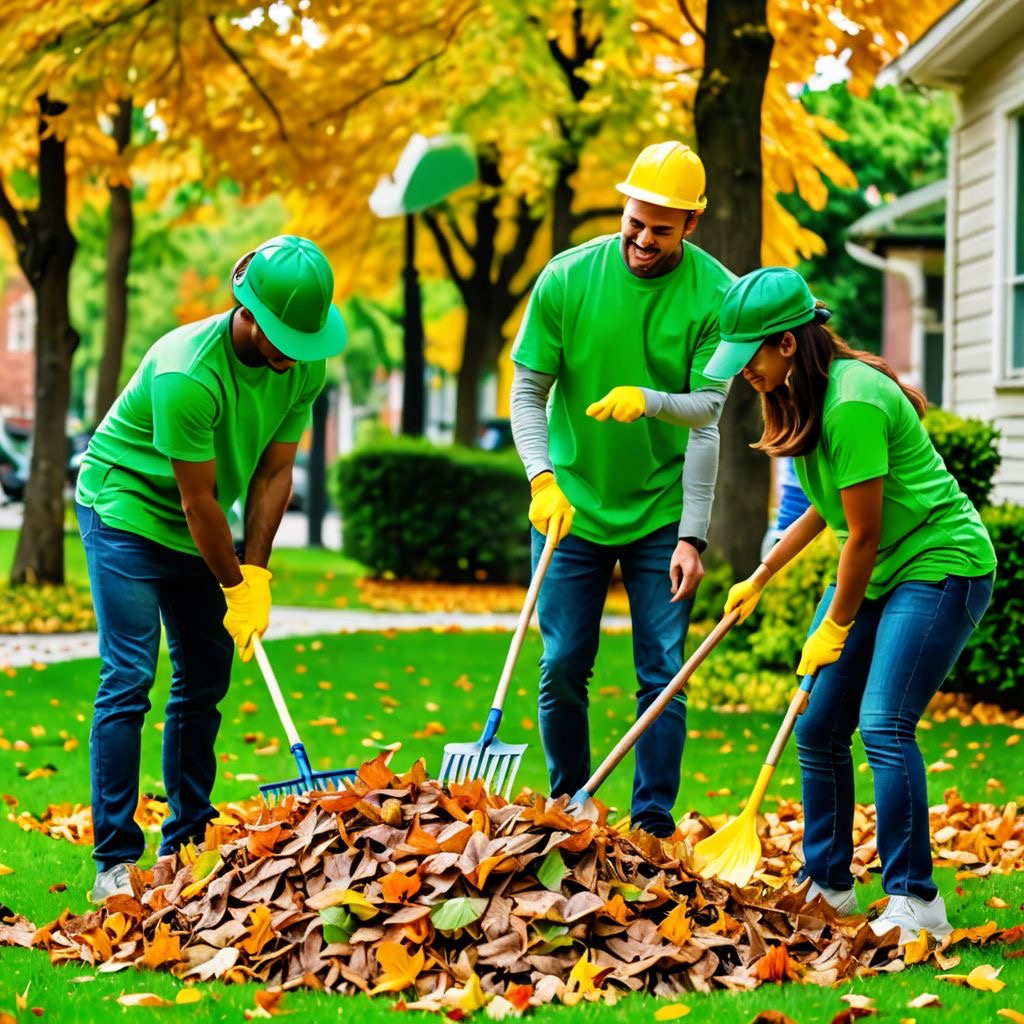
Regular maintenance is crucial for fire risk management. Schedule seasonal yard maintenance—especially in spring and fall—to clear away leaves, trim back overgrown shrubs, and dispose of dead branches. A neat yard not only looks good but reduces your risk of wildfires.
5.2 Importance of Firebreaks
Firebreaks are gaps in vegetation that act as a barrier to slow or stop the spread of fire. Consider creating firebreaks using landscaping contractors near you who specialize in maintaining fire-resistant landscapes. These experts can help engineer effective barriers through landscaping maintenance techniques, which can keep your property safe.
Tree and Shrub Care:
6.1 Trimming and Pruning Techniques
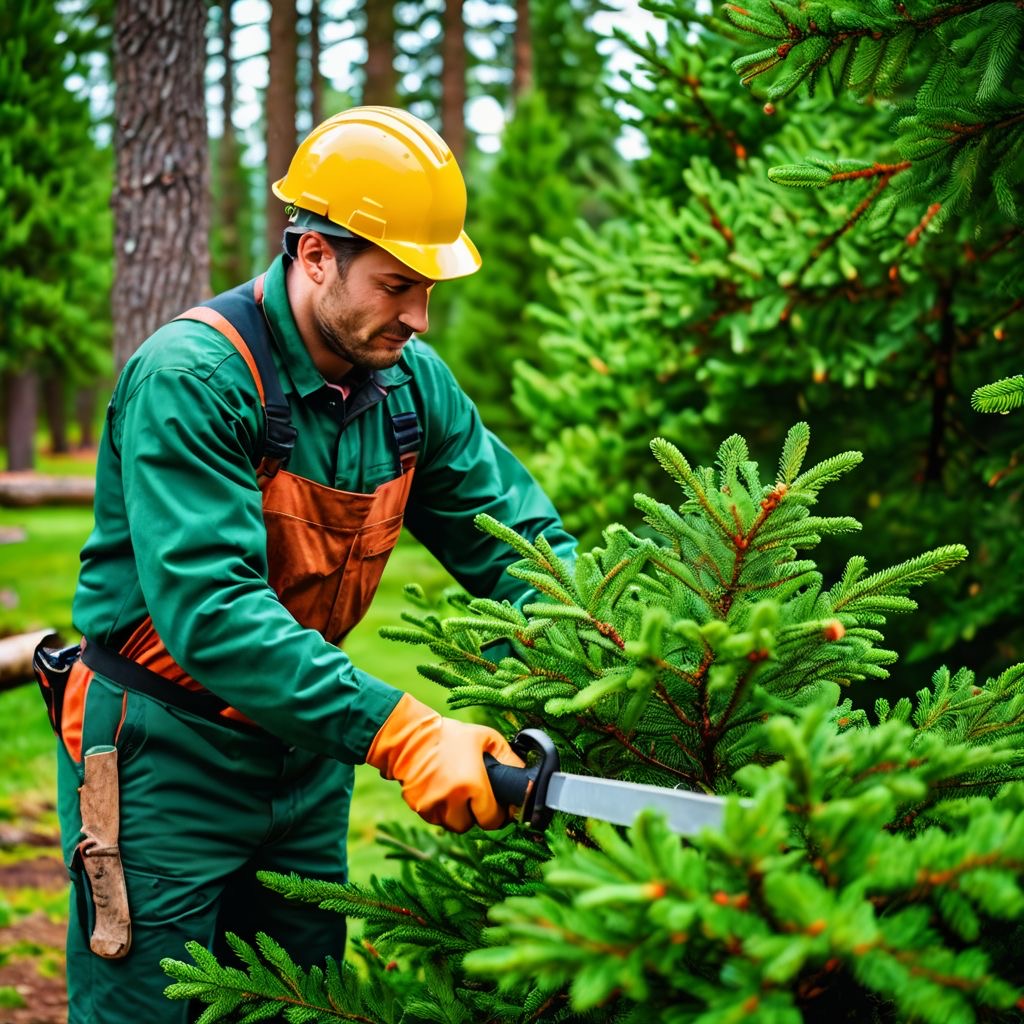
Proper care for trees and shrubs is vital. Regularly prune branches and limbs that are less than 10 feet from the ground. This ensures that flames have less fuel to consume and allows firefighters better access if a fire does occur.
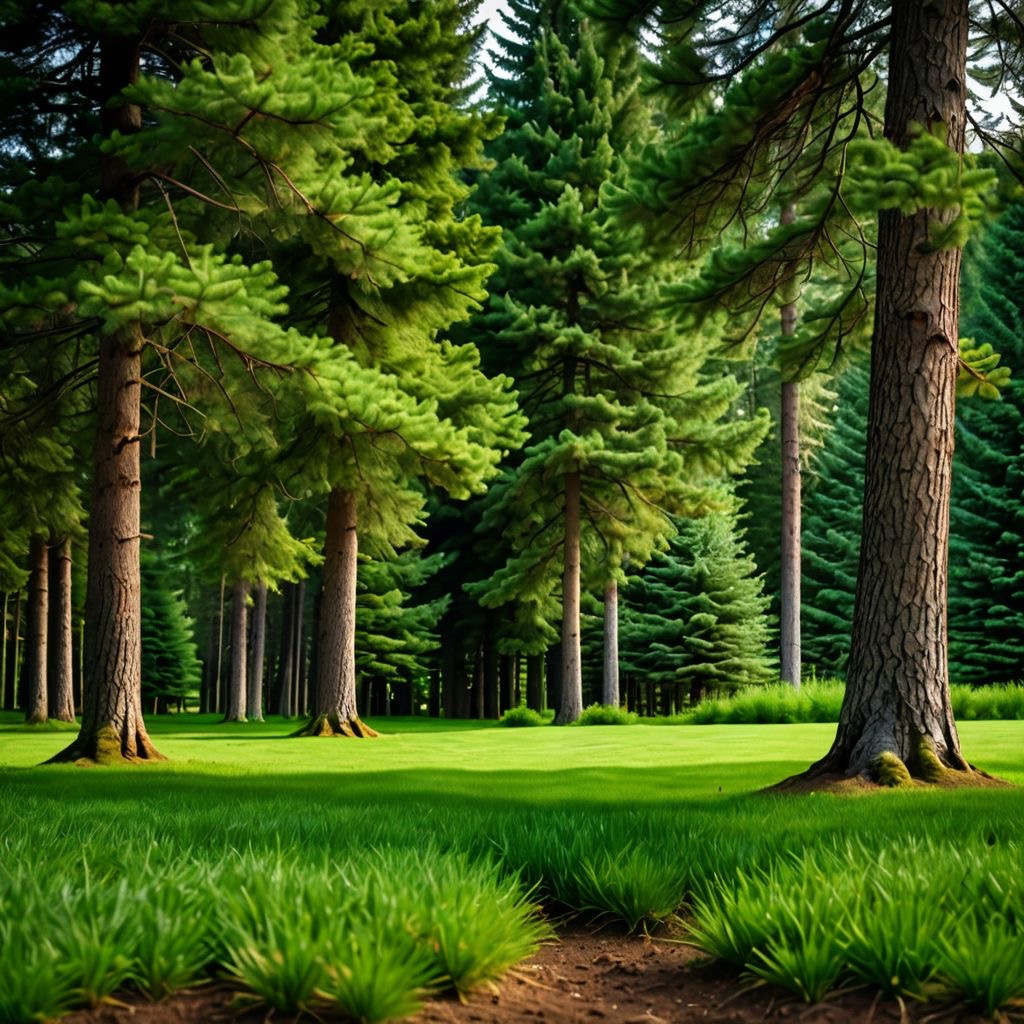
6.2 The Importance of Height Management
Managing the height of your trees and shrubs is key. Tall plants can act as ladders for fire, allowing flames to jump from branch to branch. Aim to maintain lower shrubs near your home and keep tree crowns at least 10-15 feet apart to limit fire spread.
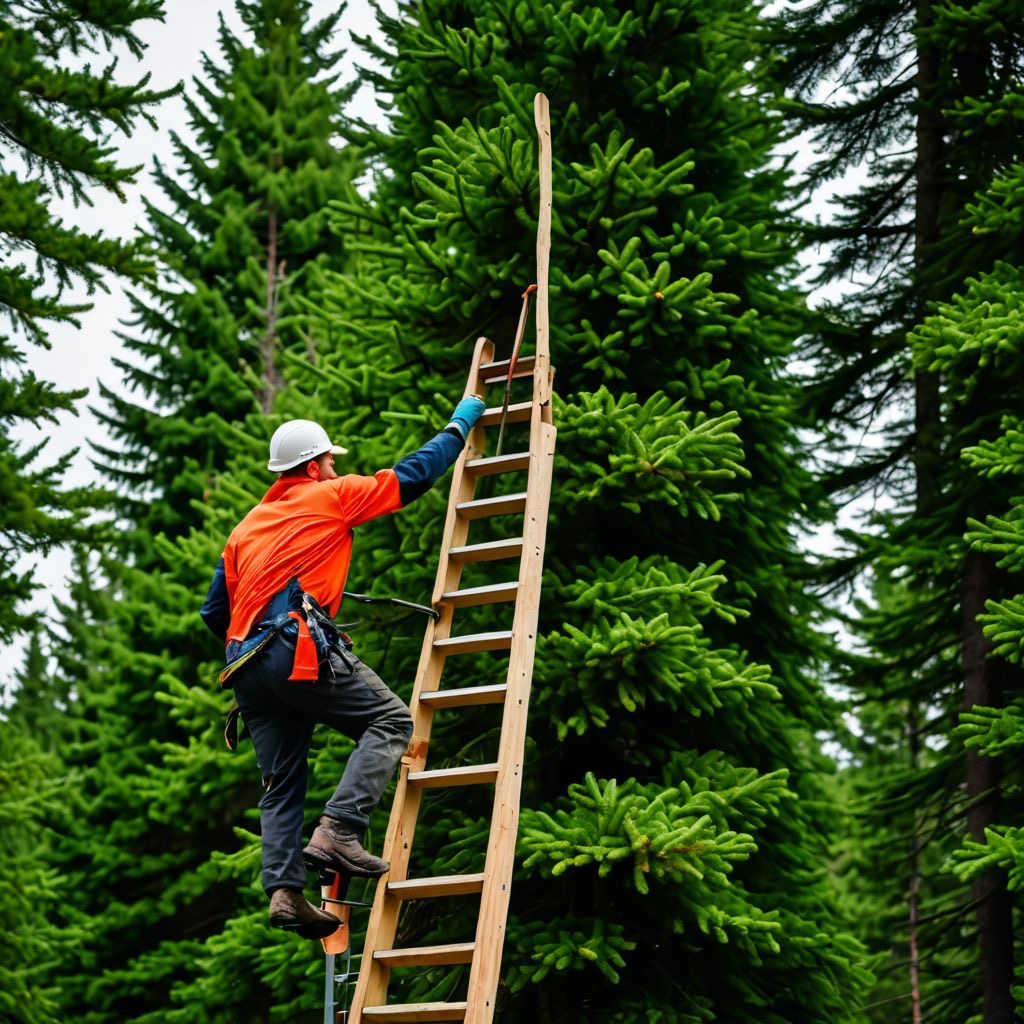
Additional Protective Measures:
7.1 Installing Irrigation Systems
Consider installing irrigation systems that can help keep your garden and yard hydrated, especially during dry months. A well-watered landscape is significantly less likely to ignite in the event of a fire. Plus, who doesn’t love a little automated yard care, right?
7.2 Importance of Fire-Safe Patios and Decks
If you're considering designing or redesigning your deck or patio, opt for fire-safe materials such as tiling or concrete, which are more resistant to heat than traditional wood. Implementing a backyard landscaping design that includes fire safety is a great fire safety idea.
Community Involvement
8.1 Working with Local Landscaping Companies
Getting involved in wildfire prevention doesn’t have to be a solo mission. Collaborate with landscaping contractors to discuss options for creating a fire-safe landscape. Winnipeg is home to a slew of talented landscaping company team members who understand the unique challenges posed by wildfires and can help design and implement an effective strategy specifically for you and your property.
8.2 Engaging in Wildfire Prevention Programs
Consider joining community organizations or councils focused on wildfire prevention. They often provide valuable resources, workshops, and incentives for homeowners striving to create safer environments. Volunteer fire departments in cottage country are a good place to start.
Conclusion:
So there you have it—your ultimate guide to protecting your home or cottage from wildfires while still keeping your yard looking fabulous. From pruning those pesky branches and carefully selecting fire-resistant plants to engaging with local landscaping experts, the steps you take today can ensure your property remains a sanctuary for you and your loved ones and stands resilient against the threat of fire. Remember, wildfires often strike when we least expect them, so let’s be proactive rather than reactive.
As you venture out into your yards, think about the efforts you’re not just making for yourself, but for your community as well. When everyone takes the initiative to maintain their properties thoughtfully, we collectively bolster our defenses against the ever-present risk of wildfires. And while you're at it, enjoy the process of beautifying your space! After all, landscaping in Winnipeg can stimulate not just the eye but also the soul.
Now go grab those gardening tools, channel your inner landscape designer, and let’s make sure that your property remains the enchanting haven it was meant to be!
Don't miss out! Click here to subscribe today and get the latest blog posts delivered straight to your inbox.

Ready to take the next step? click here to contact us today to arrange a “no obligation” introductory phone call and let’s explore how we might be able to help you.
At Sunshine, we take a great deal of pride in delivering “top-notch” service. But don't just take our word for it. Here's what our customers have to say about their experiences with us:
• Ray and his crew are outstanding. I had the pleasure of using their services with a large commercial property. The service provided, and the detail and care that went into tending to every matter, was truly remarkable. Ray was always available and quick to respond to any calls or emails. His manner and Customer Service is excellent. I would highly recommend Sunshine to anyone looking for a commercial or residential property service.
Shelly S.
️
️
️
️
️
• I have been using Sunshine for a couple of years now, and without exception, it has been amazing customer care. Normal months for snow plowing and snow removal are November to March. For both years, Ray and his company have exceeded this boundary to provide great customer support, and clear our walks and back drive area. The great snowfall of October a couple of years ago, to just our most recent Manitoba snowfall. There has never been a day that snowed, that our walks weren’t cleared first thing in the morning. I would highly recommend this team!!
Michelle P.
Please NOTE: This Michelle P. review was provided directly from the customer's email **This is Not a Google Review**
COMMERCIAL REFERENCES:
Hannah Mailloux, Property Manager
Capital Property Management
hannah.mailloux@capitalgrp.ca
Susan Wong, Property Manager
Karma Properties
susan@karmaproperty.ca
204-415-5712 ext. 201
Jean Reuther, Property Manager
D7 Property Management
jean@D7management.com
If Sunshine can help you, contact us to to schedule a consultation:
Call or text Ray directly today: 204.229.9789
or email: ray.chastko@sunshinemaintenance.ca


